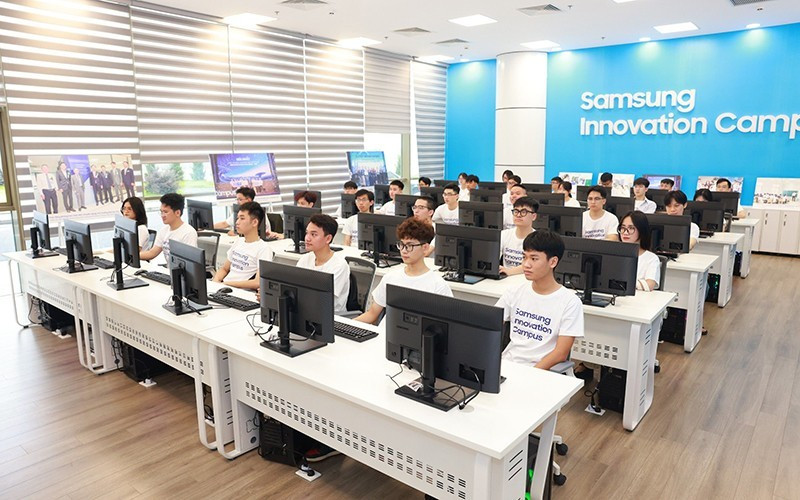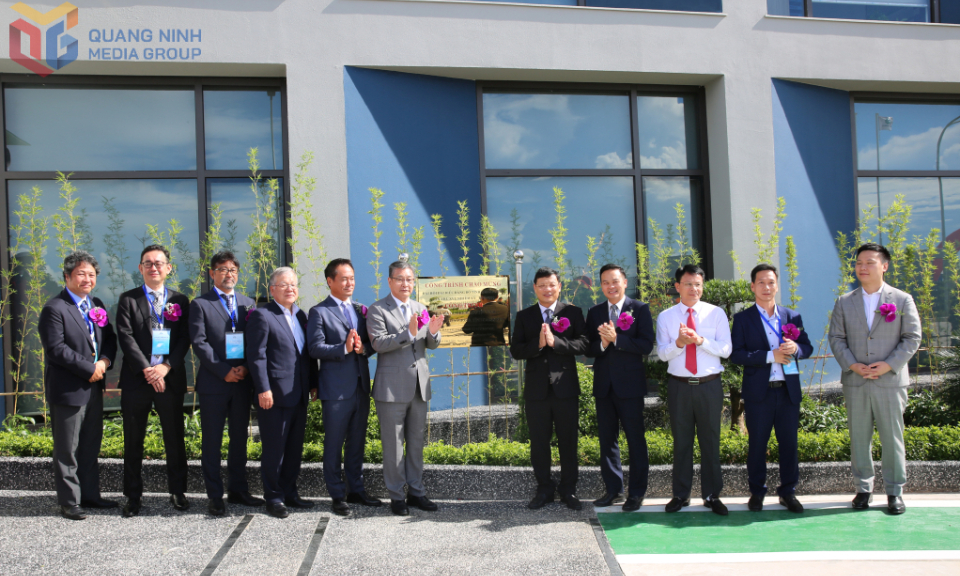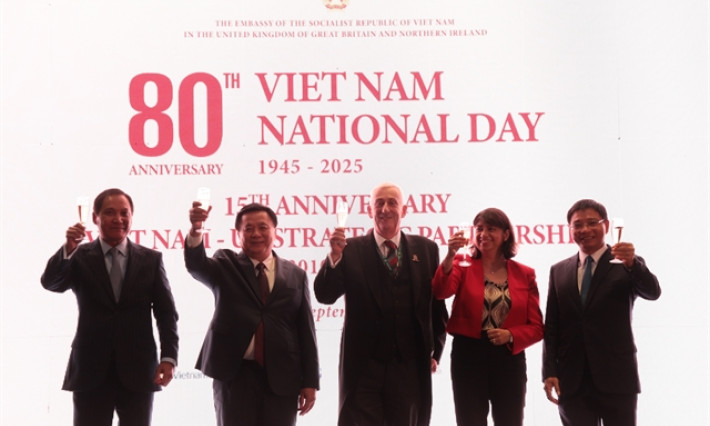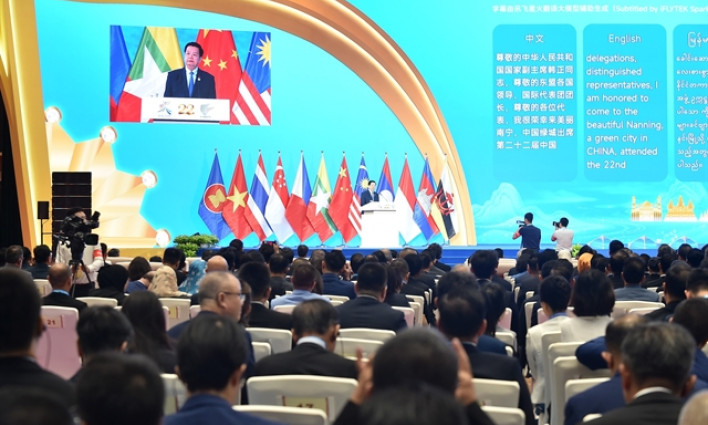Vietnam should seize opportunity to join global semiconductor supply chain
With the recommendation that Vietnam should act fast within 24 months regarding the goal of developing the semiconductor industry, the government has taken bold and prompt measures to seize this rare opportunity.
In early May, Vietnam’s National Innovation Centre (NIC) and Samsung Vietnam officially implemented the Samsung Innovation Campus programme for the 2023-2024 academic year at the NIC campus in Hoa Lac. This is the first cooperation activity between Samsung Vietnam and NIC towards realising the goal of training 50,000 semiconductor engineers by 2030.
26 trillion VND for human resources training
Under an agreement between Samsung Vietnam and NIC, the two sides will work together to organise six training classes on advanced technology for about 200 excellent students selected from universities across country.
Samsung Vietnam is one of NIC’s major partners for the goal of training technology talents to help Vietnam become a destination for innovation in the region and the world.
It is also a key content of the semiconductor human resources development plan until 2030, with a vision for 2045, presented by the Ministry of Planning and Investment (MPI) to the government for approval, which demonstrates Vietnam’s rapid and methodical step in the heating global chip race.
The total funding for the plan is estimated at 26 trillion VND (over 1 billion USD). Of which, 17 trillion VND comes from the state budget and the rest from social sources.
In the initial stage, Vietnam will focus human resources training on chip design, packaging and testing as well as some other processes related to equipment manufacturing, materials and chemicals. The form of training is mainly short-term and advanced, switching from the fields close to semiconductor, in addition to formal training on the basis of close cooperation between the government, universities and enterprises, and international cooperation in building and importing training programmes and attracting international experts to Vietnam to teach.
The global semiconductor has witnessed an impressive growth rate of 14% annually over the past 20 years, producing revenue of nearly 600 billion USD in 2023, with the figure expected to reach 1 trillion USD by 2030. During that period, the world needs an additional one million personnel for all the stages of chip design, manufacturing, assembly, packaging, and testing.
Minister of Planning and Investment Nguyen Chi Dung said that with an abundant supply of high-quality labour, manpower is Vietnam’s biggest and most distinct advantage over other countries and economies in the world.
Therefore, focusing on training and re-training the labour force so that they can participate in the market as soon as possible is a strategic direction and a decisive factor in capitalising on investment cooperation and technology transfer opportunities so as to promote rapid and sustainable development based on science-technology and innovation.
Engine of the future
Recent positive policy changes and actions have clearly demonstrated Vietnam’s determination to participate more deeply in the global semiconductor ecosystem. Thanks to a favourable investment climate and advantages in human resources, major global companies have increased their high-tech and semiconductor investments in Vietnam.
A semiconductor ecosystem is forming in Vietnam with more than 50 enterprises, mainly foreign-invested firms, such as: Intel, Amkor and Hana Micron regarding chip packaging and testing; Ampere, Marvell, Cadence, Renesas and Synopsys for design; and Lam Research and Coherent for equipment manufacturing. The ecosystem also sees the participation of large Vietnamese companies such as FPT and Viettel in the design process, which accounts for 53% of the chain value.
In Vietnam, the new development trend of advanced technologies has changed rapidly in the past six months, especially since the NIC began operating in Hoa Lac. Following projects worth billions of USD from Intel and Amkor, Vietnam is receiving large projects and cooperation opportunities from technology giants.
After Nvidia President Jensen Huang’s visit to Vietnam in December 2023, the company’s Vice President Keith Strier also visited Vietnam in April 2024 to promote investment cooperation in semiconductor and artificial intelligence (AI). These are concrete actions from the chip giant to realise the plan to transform Vietnam into a major AI manufacturing and innovation centre in Asia.
Speaking at a foreign investment attraction forum, Do Nhat Hoang, Director of the Foreign Investment Agency under the MPI, said many enterprises from the US and other countries and territories have recently arrived in Vietnam to survey its semiconductor ecosystem. They have a positive view about Vietnam, noting that the country is an emerging markets with great potential.
According to the MPI, Vietnam possesses huge potential to enhance its innovation capacity and competitiveness on the global technology market. The two promising sector of semiconductor and AI are regarded as the strategic sectors and new engines for Vietnam to participate more deeply in the global value chain.
“With a desire to participate in the supply chain, many countries have introduced special and superior policies to develop their semiconductor industry. In this race, time is a decisive factor. Therefore, the Government needs to act boldly and promptly to develop the semiconductor ecosystem and capitalise on the great available opportunities. Vietnam’s future relies on the present.” ~ Minister of Planning and Investment Nguyen Chi Dung






